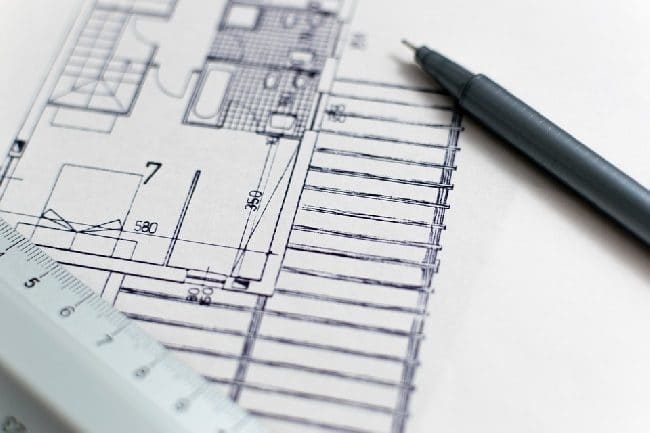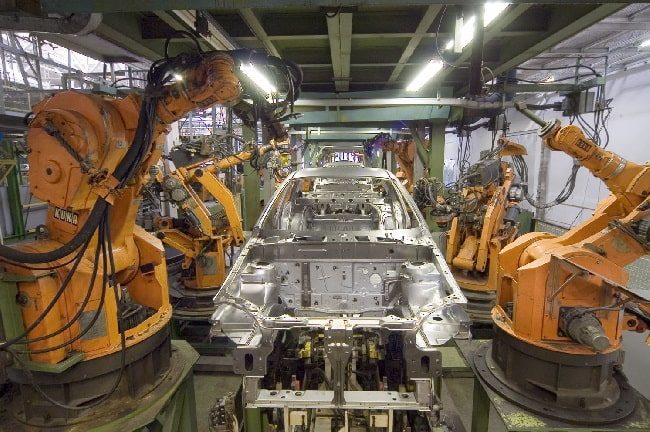Whether you’re a CAD pro or someone who just likes to dabble in design, it’s likely you’ve seen the term ‘AEC‘ crop up more than once. It’s used to describe software collections, sectors of business and a range of communities that rely on CAD. We all know that it’s surprisingly easy to go through life not understanding what certain terms mean and never bothering to actually find out. Well, thanks to the team here at Scan2CAD, there’s no need to do that with AEC!
This quick guide will explain what the term actually means, how it relates to the world of CAD and why the three industries (clue drop!) are so often lumped together. Here we go…
Table of contents
What is AEC?
Let’s get straight to the point: AEC stands for architecture, engineering and construction. Now, we could stop there, but that really doesn’t tell the whole story.
You may have noticed that AEC is included in our very own glossary of terms, and that’s because people in these industries often require raster-to-vector conversion programs. Indeed, all three fields have been heavily impacted and consequently shaped by the rise of CAD, BIM and CAM.
There are many overlaps in the job roles of people within the AEC industries and a lot of projects combine the skills and input of all of them. To get a clearer understanding of how they might work together, let’s explore the characteristics of each individual component.
Architecture

Architects plan and design a wide range of structures. Architectural drafters, for example, may create blueprints for homes or commercial buildings. Before the emergence of sophisticated CAD software, a lot of architects would rely on basic design methods like the use of a pencil and paper to produce their work. Now that programs like AutoCAD Architecture exist, however, a lot of architects will draw their designs straight into a computer.
During the planning process, people working in this industry have to take into consideration structural factors like weight and volume, as well as economic factors like materials and costs. Once again, computer software has revolutionized the way they approach and carry out such tasks. Technological advancements now allow for visualization tools like 3D renderings and virtual reality, for example, so architects can produce simulations of their designs and inspect them for errors before construction begins.
Engineering

Similar to architects, engineers spend a lot of time designing and planning. Rather than floor plans and foundations, though, they tend to focus on things like machine parts and infrastructure. There are a variety of different types of engineer, including mechanical, civil and industrial. Engineers themselves might work on anything from a tiny modification on a cell phone to building an entire jet plane.
CAD software often plays an integral role in the production and testing of designs created by engineers. Parametric modelers like CATIA, for instance, provide specialized toolsets for the design process and enable engineers to make use of features like mechanical surfacing capabilities and digital prototyping. These technologies allow engineers to achieve high levels of accuracy and create complex but cost-effective designs. Plus, they are able to see how their products will perform before they are actually built. In other words, the entire production process is made more efficient.
Construction

Construction largely refers to the creation of structures (like buildings and bridges) and infrastructure (like roads or train lines). You could argue that construction begins with the designing of a plan for something (say, a skyscraper) and continues throughout the entire process of that building being erected.
The construction industry often plays a role towards the end of processes that may be initiated by those in the architecture and/or engineering sector. It is particularly key when a production process reaches a point where something physical is actually produced. In most cases, without input from architects and engineers, construction would not be possible.
Why are these industries often combined?

Image source: CAD Services
By now you should be able to see how the roles of each of these industries intertwine and overlap. In fact, these days, it can be incredibly hard to fully separate the three. Hence, the common use of the phrase ‘AEC’.
Thanks to their heavy reliance on CAD, it’s also become convenient for software companies to combine architecture, engineering and construction when developing programs that facilitate their work processes. Certain collections produced by CAD giants like Autodesk and Dassault Systèmes are designed specifically with the AEC industries in mind (and are named as such). After all, why make three separate versions when you can market one to all of them and it’s convenient for everyone involved?
As technological advancements have encouraged a merging of roles among these core CAD users, they have also come to be reliant on BIM. Building Information Modeling (whether it refers to a particular software or simply a style of workflow) streamlines projects that involve the collaboration of people within AEC. It means everyone involved, even if they are not in the same company, can access and contribute to one central database of information. This could be the creation of a new office building or planning for a new city park.
People in the architecture, engineering and construction sectors often share similar skills, use the same software and even work on the same projects. So, it makes sense that we have a term to describe them as a single entity—thus, AEC!
To find out more about how CAD has become a vital tool for those in the AEC industries, check out our articles that take a more detailed look at the work of Architects and Engineers. And don’t forget—for all the latest CAD news and tips, visit the Scan2CAD blog!

